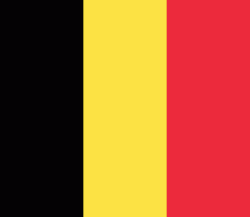Beekkant metro station (Beekkant)
Beekkant is a Brussels Metro station located in the municipality of Molenbeek-Saint-Jean, in the western part of Brussels, Belgium. It opened on 8 May 1981 as part of the Sainte-Catherine/Sint-Katelijne–Beekkant extension of former line 1, and was for a year, until 6 October 1982, the western terminus of the metro. Following the reorganisation of the Brussels Metro on 4 April 2009, it is served by lines 1, 2, 5 and 6.
The metro station runs parallel to a railway used for freight trains, and from 2010 again, as a suburban railway line of the future Brussels Regional Express Network (RER/GEN).
The station offers the following connections:
* The trains of the line 1 from the east continue their route towards Gare de l'Ouest/Weststation and Stockel/Stokkel.
* The trains of the line 5 from the east continue their route towards Erasme/Erasmus and Herrmann-Debroux.
* The trains of the line 2 from Gare de l'Ouest/Weststation continue their route towards Simonis.
* The trains of the line 6 from Gare de l'Ouest/Weststation continue their route towards Roi Baudouin/Koning Boudewijn.
* The trains of the lines 2 and 6 towards Gare de l'Ouest/Weststation continue their route towards Elisabeth/Elizabeth.
The metro station runs parallel to a railway used for freight trains, and from 2010 again, as a suburban railway line of the future Brussels Regional Express Network (RER/GEN).
The station offers the following connections:
* The trains of the line 1 from the east continue their route towards Gare de l'Ouest/Weststation and Stockel/Stokkel.
* The trains of the line 5 from the east continue their route towards Erasme/Erasmus and Herrmann-Debroux.
* The trains of the line 2 from Gare de l'Ouest/Weststation continue their route towards Simonis.
* The trains of the line 6 from Gare de l'Ouest/Weststation continue their route towards Roi Baudouin/Koning Boudewijn.
* The trains of the lines 2 and 6 towards Gare de l'Ouest/Weststation continue their route towards Elisabeth/Elizabeth.
Map - Beekkant metro station (Beekkant)
Map
Country - Belgium
 |
 |
| Flag of Belgium | |
Belgium is a sovereign state and a federal constitutional monarchy with a parliamentary system. Its institutional organization is complex and is structured on both regional and linguistic grounds. It is divided into three highly autonomous regions: the Flemish Region (Flanders) in the north, the Walloon Region (Wallonia) in the south, and the Brussels-Capital Region. Brussels is the smallest and most densely populated region, as well as the richest region in terms of GDP per capita. Belgium is also home to two main linguistic communities: the Flemish Community, which constitutes about 60 percent of the population, and the French Community, which constitutes about 40 percent of the population. A small German-speaking Community, numbering around one percent, exists in the East Cantons. The Brussels-Capital Region is officially bilingual in French and Dutch, although French is the dominant language.
Currency / Language
| ISO | Currency | Symbol | Significant figures |
|---|---|---|---|
| EUR | Euro | € | 2 |
| ISO | Language |
|---|---|
| NL | Dutch language |
| FR | French language |
| DE | German language |















